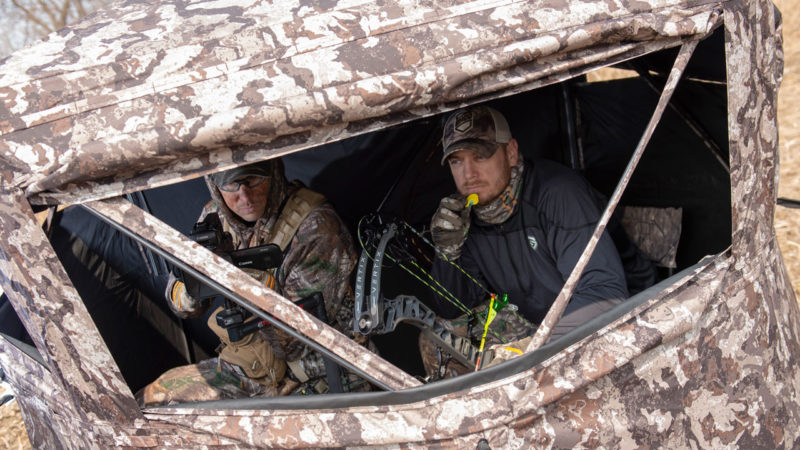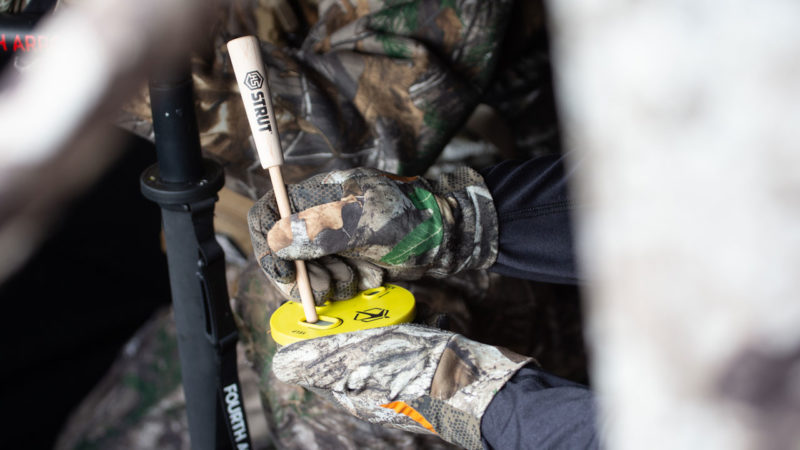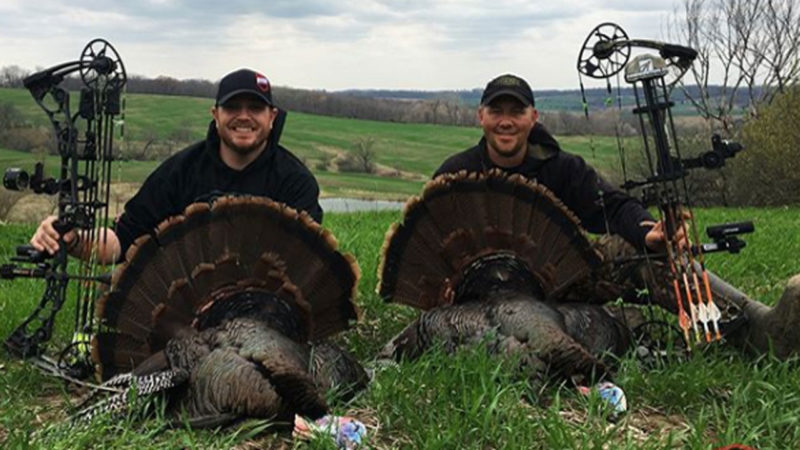When it comes to hunting, sometimes it’s nice to be in the woods alone to enjoy the peace and solitude. But if tagging a bragging-sized longbeard is your goal, sometimes having a partner can play to your advantage.
Mature gobblers are notorious for hanging up just outside of shooting range, often making a seemingly sure thing quickly fade into a lost opportunity.
This is where having a buddy with you can really pay off. Here’s a look at why two callers are better than one for turkeys.

I learned this lesson years ago while on a spring hunt in Illinois with a good friend.
On our first morning’s hunt, a pair of longbeards flew down from their roost with a hen already in tow. This is always a tough situation to be in. Our calling had the toms fired up and answering our calls, but when my buddy began to slowly work his way behind me and down the ridge in the opposite direction of the toms, they almost came unglued.
His “drift calling” pulled the two lovesick birds away from the hen and lead to the demise of one of them.
Team calling worked again later that same morning, when we located a trio of gobblers that were without hens. The birds were really fired up and hammering hard, so we had to set up right then and there. We didn’t even get a chance to set our decoys out.

Even though the birds were answering our calls fairly well, they just wouldn’t commit to them. One wary old gobbler finally poked his head over the crest of the hill in front of us, but tucked back down before we could get on him. Once he tucked back over the ridge and out of sight, we thought all was lost.
However, with a little dual calling, we felt like we might get lucky and possibly pull the bird back in for one more look. It was worth a shot.
No sooner had I slipped down the ridge a ways and made a series of yelps, than one of the toms popped his head over the ridge in the hopes of finding the hen that was slipping away. He committed to the calls, coming well within range of my friend for the shot.

Tips for Using a Second Caller for Turkeys
- Have the second caller position himself or herself fifty to eighty yards behind the hunter. This gives the gobbler the impression that the hen is further away. This way, if he hangs up short, he will likely still be in range of the shooter.
- If a tom becomes extremely wary, have the caller move off away from the tom, all the while calling and scratching the leaves around him. This will give the impression that the hens are not particularly interested in him. Sometimes this is all it takes to pull him in those last critical yards.
- Use multiple calls to sound like different hens. Different calls can also get a gobbler fired up as some call frequencies tend to elicit a response when others won’t.
- Take full advantage of having two callers in the field. Two hot hens can often times be more enticing to a gobbler than just one.
- You can sound like even more birds by simply turning your head/body, or direction you’re casting the calling sounds, and mixing up your tone and pitch to make it sound like a whole flock of birds.
Conclusion
Sure, many times hunting solo is all it takes to harvest a big gobbler.
But on some cantankerous toms, adding a second caller to your bag of tricks can make the difference between being successful, or simply having a close encounter.
Give tag-team calling a try this season and see if it doesn’t bring more birds within range.
Also, be sure to comment below and let us know what your favorite calling tactic looks like.

 By
By 



